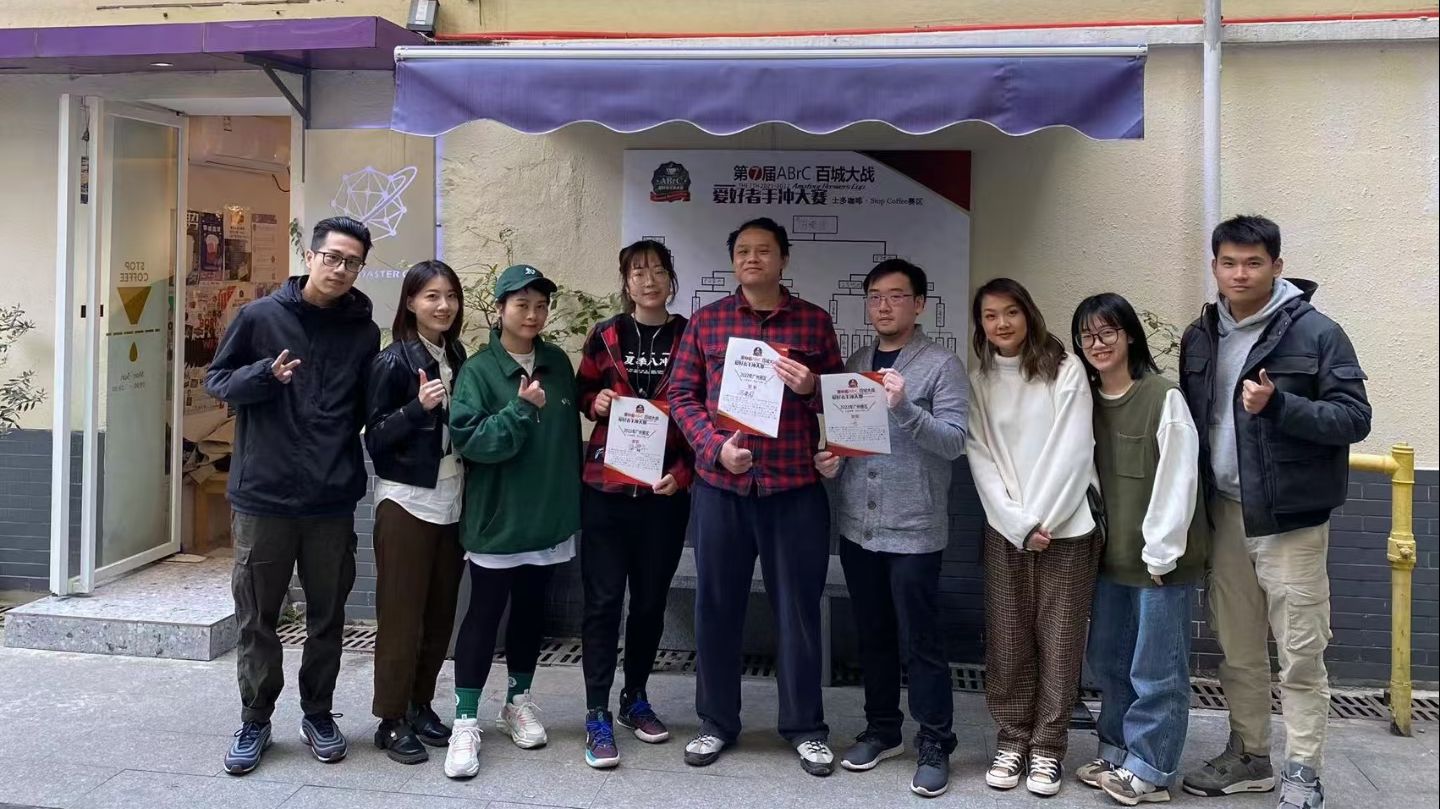On the day of the competition, I woke up unusually early. I was participating with a casual mindset, so my hairstyle and outfit were very relaxed. Originally, my mother planned to take me to work and drop me off, but I woke up even earlier than her. I took my eco-friendly bag and my coffee grinder, walked to the competition venue, signed in, received the competition samples, and then went nearby for breakfast.
The breakfast shop had a strong local vibe. I guessed the shop was run by a family, with steamer baskets piled up at the entrance filled with rice rolls, and a large pot of braised beef next to it, with folding tables set up outside. The owner worked efficiently, collecting payments on one side while serving without counting, using a plate covered with a fresh-keeping bag, scooping up the snowy white rice rolls, drenching them in a generous spoonful of beef sauce, and sprinkling sesame seeds on top. Before the customers even took their first bite, the aroma was already enticing. When I received my portion and found a place to sit down, I couldn't wait to grab a pair of disposable chopsticks from the table and picked up a piece of rice roll wrapped in beef sauce. I truly experienced the richness of the beef and the fragrant rice roll, complementing each other perfectly. Taking another bite of the beef, I found the meat to be firm yet tender. Adding a bit of chili sauce made it even better.
After finishing breakfast, I took a photo with the other contestants and the organizers, then queued up to draw lots for contestant numbers, and then drew lots to determine the group for the first round (three people per group). Interestingly, in my group, one spot was originally vacant, and the judge, Xiao Pu, wrote his name in my group to fulfill his obligations, so I got a lucky break and advanced to the next round.
Each round involved weighing the beans, grinding them, brewing, and distributing the coffee in two portions, one for the judges and one for fellow competitors or newly met contestants, all within five minutes. This left little time for contestants to brew, with only about two minutes to spare. I used a 1:15 coffee-to-water ratio, and since the beans were lightly roasted, I habitually controlled the water temperature between 90-92°C. The competition also provided hand-pour kettles that could boil water and adjust the temperature, and the water flow was quite easy to control. It’s worth mentioning that although the sample beans were lightly roasted, almost every bean had uneven roasting, with some beans even having three different colors, so my single pour technique was the best way to salvage them.
In the later knockout rounds from the top eight to the top four, I continued to use the single pour brewing method, maintaining the sweetness, and after reaching the top four, I still used the single pour method and advanced easily. In the semifinals, I tried changing my brewing method to a three-stage process, still using a 1:15 coffee-to-water ratio, but dividing the water into three pours. I can say that the sweetness was still preserved, and the layers were even richer. What impressed me the most was the coffee brewed by my opponent, Li Jinhao. After tasting a cup, I found the sweetness outstanding, and the honey-like flavor amazed me. If I were a judge, I might not have advanced. In the final match against Liang Ludan, I easily managed to win.
When I "overcame obstacles" to win the championship, the name on the certificate was not written very neatly, but at least it proved that I wrote it. At that time, I was carrying a coffee grinder on my way back, looking for a copy shop along the way. It was hard to find one, and when I finally did, I couldn't laminate the certificate. I awkwardly carried it around, worried it might get damaged, which was quite embarrassing.
